An automated answer
Given a set of x and y values as well as a set of peaks (the x-coordinates of the peaks), here's how you can automatically find the area under each of the peaks. I'm assuming that x, y, and peaks are all Numpy arrays:
import numpy as np
# find the minima between each peak
ixpeak = x.searchsorted(peaks)
ixmin = np.array([np.argmin(i) for i in np.split(y, ixpeak)])
ixmin[1:] += ixpeak
mins = x[ixmin]
# split up the x and y values based on those minima
xsplit = np.split(x, ixmin[1:-1])
ysplit = np.split(y, ixmin[1:-1])
# find the areas under each peak
areas = [np.trapz(ys, xs) for xs,ys in zip(xsplit, ysplit)]
Output:

The example data has been set up so that the area under each peak is (more-or-less) guaranteed to be 1.0, so the results in the bottom plot are correct. The green X marks are the locations of the minimum between each two peaks. The part of the curve "belonging" to each peak is determined as the part of the curve in-between the minima adjacent to each peak.
Complete code
Here's the complete code I used to generate the example data:
import scipy as sp
import scipy.stats
prec = 1e5
n = 10
N = 150
r = np.arange(0, N+1, N//n)
# generate some reasonable fake data
peaks = np.array([np.random.uniform(s, e) for s,e in zip(r[:-1], r[1:])])
x = np.linspace(0, N + n, num=int(prec))
y = np.max([sp.stats.norm.pdf(x, loc=p, scale=.4) for p in peaks], axis=0)
and the code I used to make the plots:
import matplotlib.pyplot as plt
# plotting stuff
plt.figure(figsize=(5,7))
plt.subplots_adjust(hspace=.33)
plt.subplot(211)
plt.plot(x, y, label='trace 0')
plt.plot(peaks, y[ixpeak], '+', c='red', ms=10, label='peaks')
plt.plot(mins, y[ixmin], 'x', c='green', ms=10, label='mins')
plt.xlabel('dep')
plt.ylabel('indep')
plt.title('Example data')
plt.ylim(-.1, 1.6)
plt.legend()
plt.subplot(212)
plt.bar(np.arange(len(areas)), areas)
plt.xlabel('Peak number')
plt.ylabel('Area under peak')
plt.title('Area under the peaks of trace 0')
plt.show()

